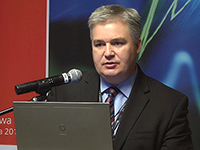How do we diagnose non-ST-segment elevation acute coronary syndrome in 2016?
Sanjit S. Jolly: That is an excellent question. I think it is still very important that we take a history – so we still really need to talk to the patient – and understand it with regards to the type of the chest pain that they are having. In addition to that, we have new markers, such as high-sensitivity troponin assays, and the levels are often elevated as soon as the patient arrives to the hospital, so we can diagnose the acute coronary syndrome earlier. The electrocardiogram is still a staple; it is an important risk marker and helps confirm the diagnosis.
That is really the mainstay. Some centers have experiments with high-resolution computed tomography (CT) in the emergency department, but that is not routine. We use clinical history, high-sensitivity troponin, and the electrocardiogram.
 English
English
 Español
Español
 українська
українська









